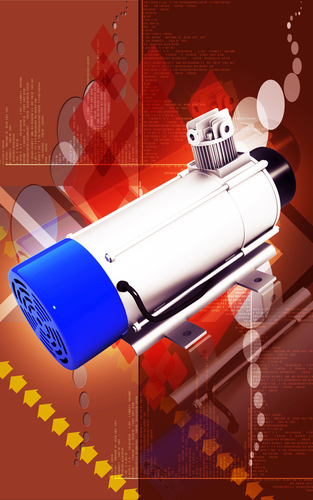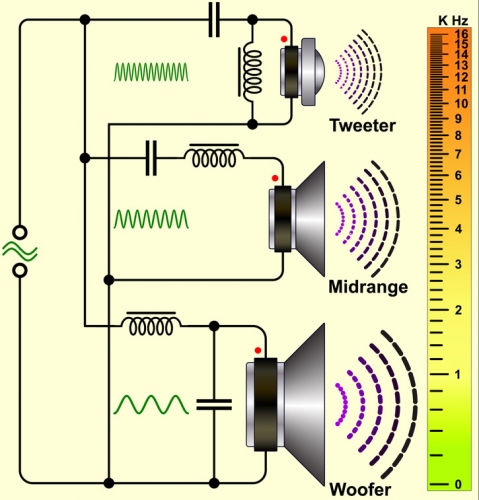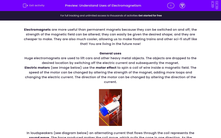Electromagnets are more useful than permanent magnets because they can be switched on and off; the strength of the magnetic field can be altered; they can easily be given the desired shape; and they are cheaper to make. They are also much cooler, allowing us to make floating trains and other sci-fi stuff like that! You are living in the future now!
General uses
Huge electromagnets are used to lift cars and other heavy metal objects. The objects are dropped to the desired location by switching off the electric current and subsequently the magnet.
Electric motors (see image below) use the motor effect to spin a coil of wire inside a magnetic field. The speed of the motor can be changed by altering the strength of the magnet, adding more loops and changing the electric current. The direction of the motor can be changed by altering the direction of the current.

In loudspeakers (see diagram below) an alternating current that flows through the coil represents the sound wave. The force produced makes the coil move, which pulls the cone in one direction. As the direction of the current changes, the direction of the force also changes and the cone is pulled the opposite way. The forward and backward motion of the cone produces a sound wave in the air.
The pitch and loudness of the sound depend on the frequency and amplitude of the electrical signal, which affects the size of the force.

Relays work by using a small current circuit to activate an electromagnet - this pushes the soft iron armature which brings the contacts of the large current circuit together, thus creating the output effect.
Generating electricity
Electricity can be generated in two ways:
1) Moving a wire in a magnetic field. The direction and speed of the wire determines the direction and size of the current, respectively.
2) Moving a magnet in a coil of wire. The direction and position of the poles determine the direction of the current. The speed of the magnet determines the size of the current.
Industrial processes of generating electricity involve spinning a coil of wire in a magnetic field. The current produced is called induced current. During each rotation, each side of the coil moves up and down. The change in direction results in the change of the current's direction, so the current is called an alternating current (AC).
Transformers are used in the National Grid to change the voltage of alternating current to reduce energy waste and to produce current safe for use at home. The magnetic field around the alternating current in the primary coil changes, which induces an alternating current and voltage in the secondary coil. The number of loops in the coil determines the size of the voltage (see diagram).
.png)
.png)
The size of the output voltage can be calculated with the formula in the diagram above.
Phew - that's a lot of information to take in! Are you ready to put some of this to the test in a set of questions? Good luck!








